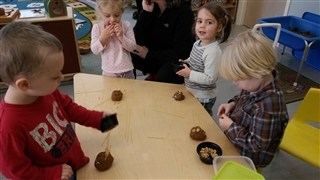At a recent parent seminar, parents shared tips on traveling with infants. The parents have found that, for the most part, car trips with a baby go well. They’re often surprised to find that infants can travel happily even though confined to a car seat on long trips. Infants enjoy the closeness of family members and the movement of the car.
Here were some pointers offered:
- A car seat padded with a head support and strap covers can add to the comfort of a young infant.
- Making frequent stops is helpful. A dad commented that he had been used to driving in long shifts, but when he re-geared his thinking to making more frequent stops for the baby, he found it enjoyable. The baby introduced them to fellow travelers, who came over to admire the tiny infant and started conversations.
- Places for changing diapers were improvised. A changing pad in the back of the car or back (with the car stopped!) worked well for one family. Some parents also used the back seat for feeding baby.
- Extra equipment needed for babies (e.g. stroller, diapers, extra food and clothing) fill up a car, but parents found that planning ahead and having the needed equipment and supplies made for a smoother trip.
- Nursing moms find feeding baby during travel is easy. Parents of bottle babies can check ahead and make sure the type of formula they’re using is available at their destination to eliminate the need to bring a large supply.
- Taking some good toys is a must, as babies become avid explorers of objects. Some new little items to hold and mouth will keep baby busy. Items from the house, such as an empty wipes container, or toys with moving parts will appeal. Look for ways to make the toys available for baby. Attach dangling toys to the handle of the car carrier. A busy surprise box with pop-up figures is usually worth the space it takes for a baby over ten months old.
- Don’t forget board books, singing with your child, and children’s music.



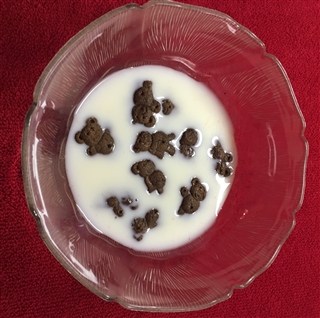
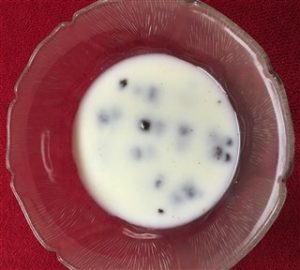 Toddlers will just have fun watching the teddy grahams dissolve in the milk. You will want to expose them to new words like: dissolved, mushy, absorb, and introduce them to a stopwatch, if you decide to use one.
Toddlers will just have fun watching the teddy grahams dissolve in the milk. You will want to expose them to new words like: dissolved, mushy, absorb, and introduce them to a stopwatch, if you decide to use one. 
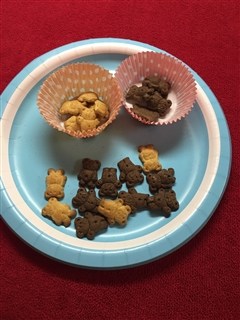
 2 different kinds of teddy grahams (chocolate, honey)
2 different kinds of teddy grahams (chocolate, honey)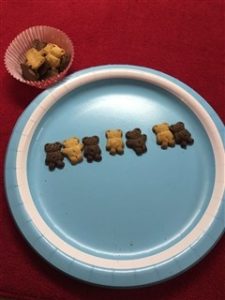 1. Sort the teddy grahams by front and back. When pouring a few onto the plate, sort into two piles – teddy grahams facing up and teddy grahamns facing down.
1. Sort the teddy grahams by front and back. When pouring a few onto the plate, sort into two piles – teddy grahams facing up and teddy grahamns facing down. 


